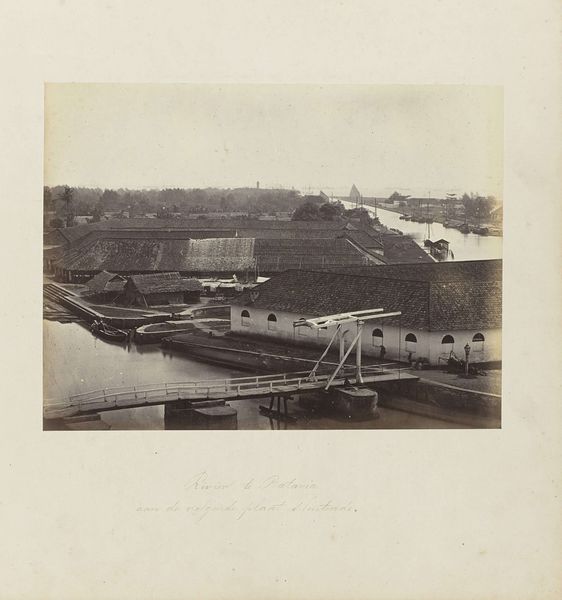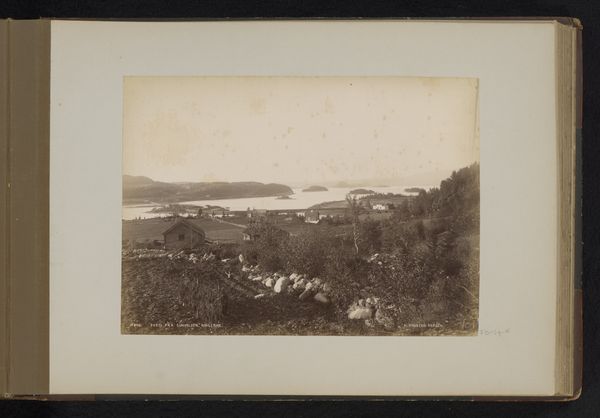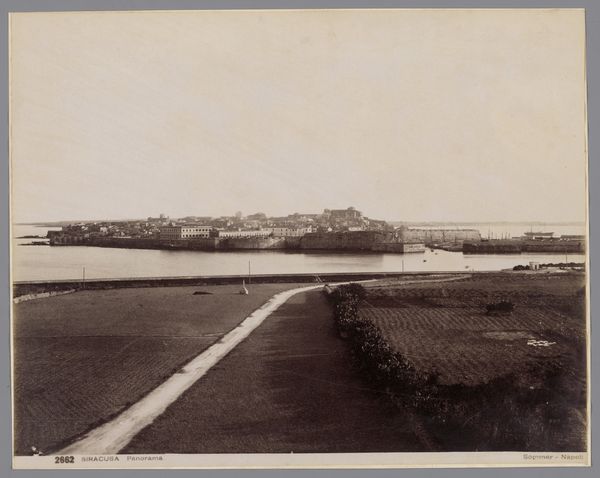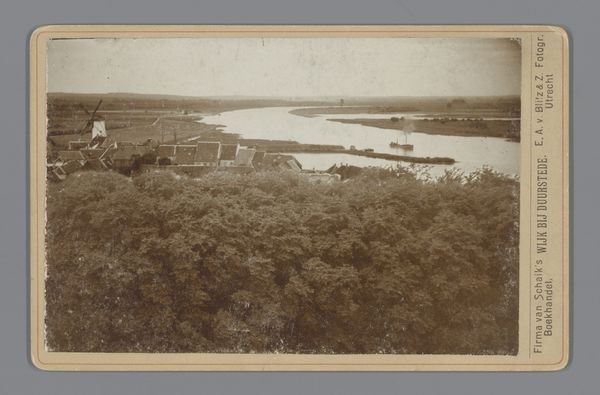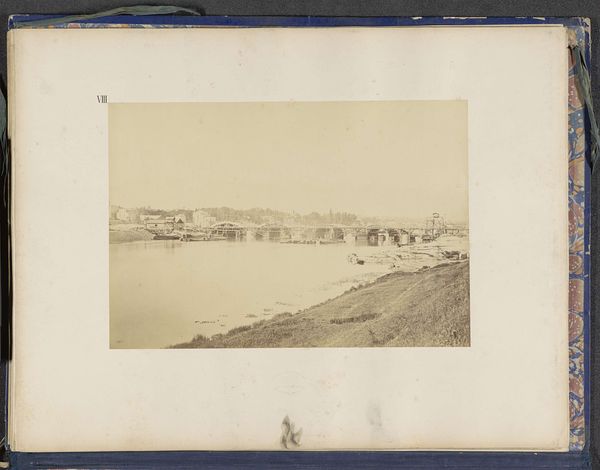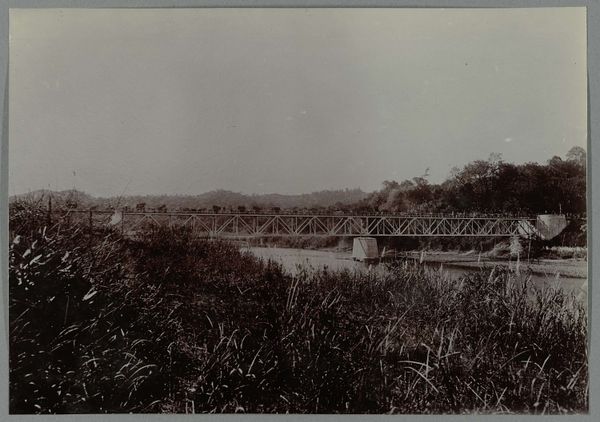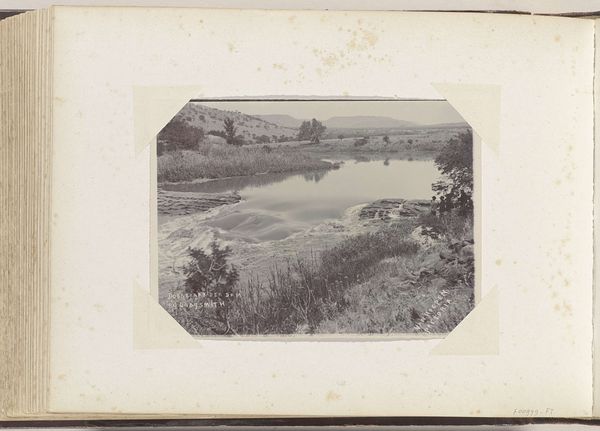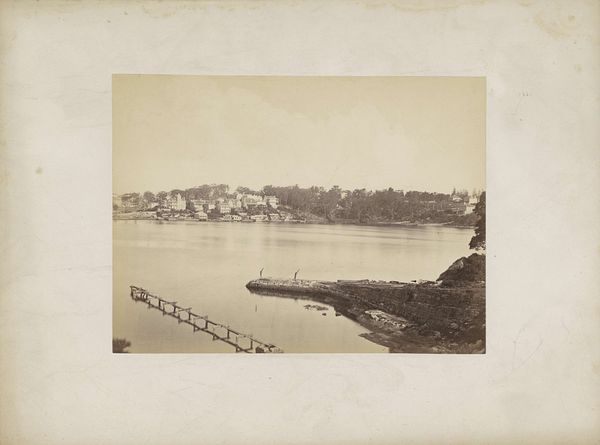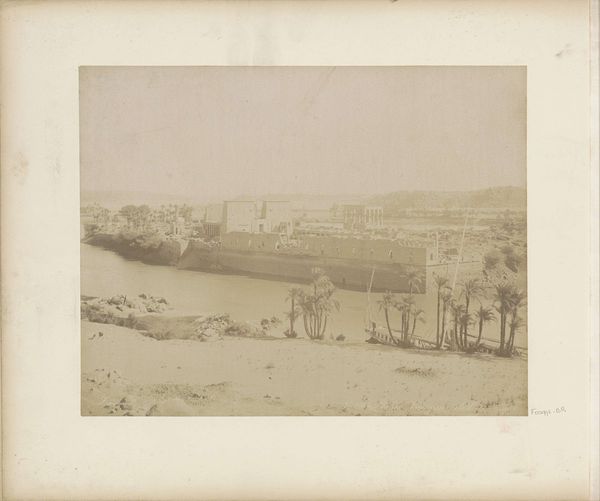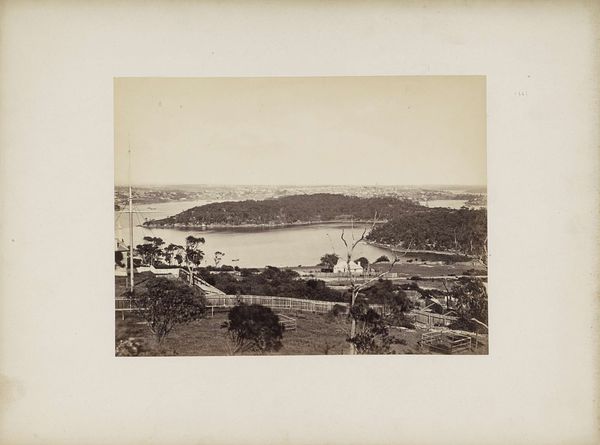
Gezicht op de gebouwen, kades en omgeving van de Tanjong Pagar Dock Co. Ltd. in Singapore before 1905
0:00
0:00
photography, albumen-print
#
aged paper
#
landscape
#
photography
#
orientalism
#
cityscape
#
albumen-print
Dimensions: height 267 mm, width 361 mm, height 267 mm, width 1715 mm
Copyright: Rijks Museum: Open Domain
Curator: This albumen print, titled "Gezicht op de gebouwen, kades en omgeving van de Tanjong Pagar Dock Co. Ltd. in Singapore", comes to us from before 1905 and was created by G.R. Lambert & Co. Editor: My first impression is one of faded grandeur. There's something haunting about this sepia-toned vista, as if the present has overgrown a once-vital, structured space. Curator: Albumen prints such as this one were widely used during that era because of their ability to produce incredibly detailed and sharp images, a result of a complex process involving coating paper with egg white and silver nitrate. Consider the sheer labor and chemistry that goes into each print! Editor: And, we can’t ignore the implied labor this scene supported and exploited. Look at the strategic placement of the docks and the implicit relationship between colonial power, resource extraction, and the subjugation of indigenous populations. Singapore, even then, a vital port, a cog in a global machine built on inequality. Curator: Indeed. Tanjong Pagar Dock Company, formed to consolidate shipping and warehousing, rapidly changed Singapore’s economy and port infrastructure, making the landscape and its products available in different material ways. Note how the photograph renders every detail in the built structure, foregrounding Western presence in the region. Editor: It's difficult to disconnect this “view” from the reality of colonial expansion, and also the loss of place. While seemingly documenting progress, we can’t overlook the voices erased in the relentless march of imperial advancement. Curator: Absolutely. And the photograph as a reproducible medium further democratized that image for mass consumption, feeding colonial desire, as if a collectible commodity in itself. Editor: Perhaps viewing it then necessitates a focus on subaltern perspectives that complicate its historical narrative by interrogating power structures. This approach humanizes overlooked elements of this urban development, as well as reveals inequalities that the image glosses over in order to facilitate economic objectives. Curator: By analyzing both the technology used to create the image as well as the broader social and economic structures implicated in the Tanjong Pagar Dock’s operation, we expose a dialogue on what art does. Editor: So this photo offers, if we're open to looking critically, an uncomfortable, but necessary dialogue with a very painful legacy. A starting point, perhaps, for decolonizing our perception.
Comments
No comments
Be the first to comment and join the conversation on the ultimate creative platform.
